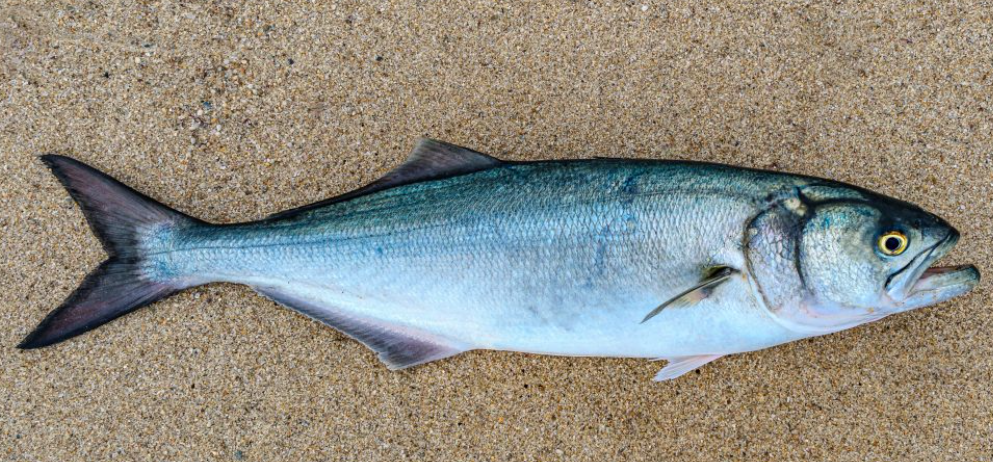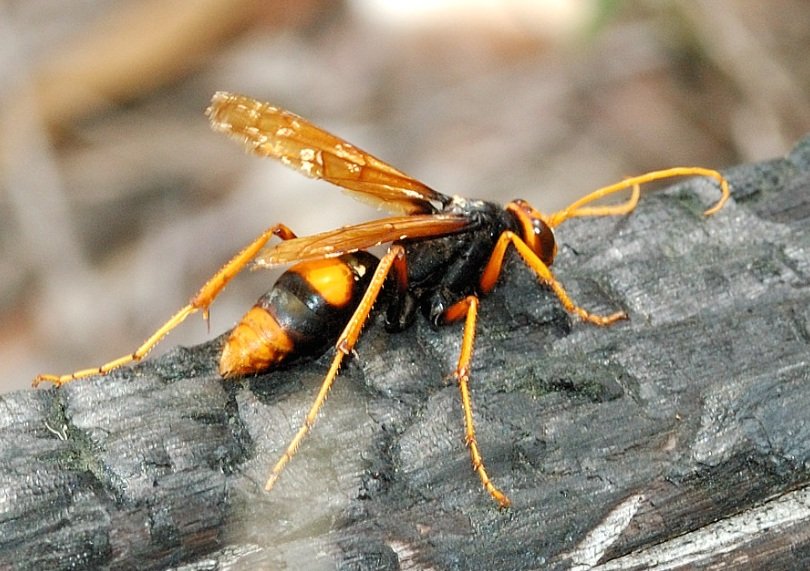
Physical Characteristics and their sharp teeth and powerful jaws
The Atlantic Ocean is home to the common species of predatory fish, or bluefish (Pomatomus saltatrix). Their stunning blue-green coloration, which is widely recognised, gives them their name. The bluefish has a streamlined body with a pointed snout and a large mouth full of sharp teeth.
Preferred habitats of bluefish, such as coastal waters and estuaries
These fish are very migratory and may be found in coastal waters from Argentina to Nova Scotia. They are quite abundant on the US east coast, where recreational fishermen often target them. Anglers highly prize bluefish because of their aggressive feeding habits and propensity to assemble in schools.
Feeding habits of bluefish, focusing on their voracious appetite
Bluefish are omnivorous carnivores that eat a variety of foods, including smaller fish, squid, and crabs. They are well known for possessing powerful jaws and teeth that may inflict serious damage. Sport fishermen love bluefish because of their high activity levels and reputation for retaliating when hooked. The solid texture and rich flavour of bluefish meat make them highly sought-after in commercial fisheries.
Fascinating facts about Blue Fish
Pomatomus saltatrix, also known as the bluefish, is a common saltwater fish found in many coastal areas worldwide. Bluefish are popular among fishermen and seafood lovers due to their strong jaws and aggressive nature.
Appearance of bluefish, including their size, shape, and coloration
The sleek, torpedo-shaped bodies and vivid blue-green colouring on the top backs and flanks of bluefish make them immediately identifiable. They can rip through their prey with their big jaws full of sharp fangs.
Physical characteristics contribute to their predatory nature
Bluefish have the ability to reach remarkable lengths; an adult typically weighs between three and twenty pounds and measures between twenty and thirty inches in length. Larger specimens, measuring more than thirty pounds, have been documented, however.
Migratory behaviour and the regions where they can be found
Because they migrate widely, bluefish may be found in both offshore and coastal regions. They are often found in the Mediterranean Sea, the South Atlantic Ocean, and the Atlantic coast of North America, from Maine to Florida. They are most typically found in temperate and subtropical environments.
Feeding habits of bluefish, focusing on their voracious appetite
Bluefish are renowned for their combative eating habits and are omnivorous predators. They mostly consume squid, crabs, and smaller fish, including menhaden, mullet, and anchovies. As opportunistic feeders, bluefish often target schools of baitfish, setting up a feeding frenzy.
life cycle of bluefish, including their spawning habits
Bluefish normally live between nine and twelve years, which is a rather limited life span. They are sexually mature, between the ages of two and three. Female bluefish release their eggs into the water during the spawning season, which runs from May to October, when the males fertilise them. After that, the eggs hatch in a day or two.
popularity of bluefish as a sportfish among anglers
Both commercial and recreational fishermen have a strong demand for bluefish. They make a spectacular catch, as they are renowned for their powerful struggles and daring jumps when caught. The firm, tasty, and high-omega-3 flesh of bluefish is another reason for its popular status.
Threats or challenges they face, such as overfishing or habitat degradation
There is presently no listing for bluefish as endangered or vulnerable, and numbers are thought to be stable. On the other hand, habitat loss and overfishing may be detrimental to their numbers. To secure the long-term survival of bluefish and other marine species, it is critical to engage in ethical fishing methods and promote sustainable fisheries.
importance of bluefish in both ecological and economic contexts
Bluefish are amazing marine animals found all across the world’s coastal seas. They are an interesting species to study because of their eye-catching look, voracious eating habits, and widespread appeal among fishermen. Gaining greater knowledge about bluefish will help us conserve them and recognise their significance to marine ecosystems.


